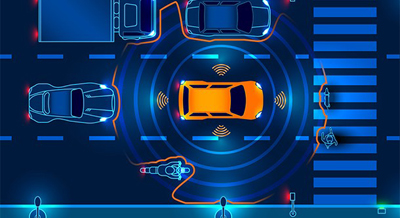New research from the AAA Foundation for Traffic Safety found drivers who use advanced driver assistance systems (ADAS) grow more comfortable with the technology over time---sometimes too comfortable. After weeks of using ADAS, attention to driving tended to drop. However, these drivers also used ADAS more when highway demands were lower.
“The AAA Foundation findings from this research are a cautiously positive sign for the future of vehicle automation,” said Dr. David Yang, president and executive director of the AAA Foundation. “As drivers become more comfortable with the technology, they will be more likely to use it, which could lead to safer and more efficient transportation. But they must use it properly and understand the system’s limitations.”
The study involved 30 drivers operating a vehicle with advanced driving assistance system (ADAS) features, including Adaptive Cruise Control and Lane Keeping Assistance. The study participants drove the ADAS-equipped vehicle for six to eight weeks on highways and were assessed before, during and after on their behavior and attitudes toward the driving assistance technology.
Key Takeaways
- Drivers can become comfortable with ADAS over time but are less likely to use the technologies in high-demand situations, preferring to use driver assistance on roads with lower traffic and better weather conditions.
- Drivers who used their vehicle’s ADAS reported lower stress levels and greater driving enjoyment.
- Over six to eight weeks, there was an increase in the frequency of system warnings reminding the drivers to pay attention. This suggests drivers became more comfortable engaging in non-driving activities as they gained familiarity with ADAS.
Intriguingly, the research found drivers initially paid more attention to the driving task when using ADAS than when driving manually. However, after a few weeks of experience, drivers began to relax and multitask more often while the vehicle was in partial control. These findings suggest drivers can learn to trust and rely on ADAS over time. However, drivers must be aware of the technology’s limitations and prepared to take over in an emergency.
ADAS are widely available, with some technologies combining acceleration with braking and steering. Since the introduction of these sorts of ADAS features, there have been numerous newsworthy instances of drivers misusing the systems by watching videos, working, sleeping or even climbing into the back seat.
To prevent such activities, some vehicles equipped with this technology monitor drivers using a camera-based system that watches their faces or a system that tracks steering wheel movements. Recent AAA automotive research testing found the camera-based system to be superior.
The AAA Foundation’s research reinforces the importance of the Safe System Approach (SSA). ADAS systems provide a safety benefit to drivers and other road users, such as cyclists and pedestrians, by alerting the driver to their presence. The SSA is a strategic way of leveraging the engineering and behavioral countermeasures proven effective at preventing traffic crashes and the injuries that can result from them.
The study’s findings suggest drivers are willing to use driver assistance systems but are still cautious about relying too heavily on them. This is essential information for automakers and regulators as they work to develop and deploy safe and effective automated vehicles.
What This Means for the Future of Vehicle Automation
The findings of this study suggest ADAS-equipped vehicles have the potential to be a safe and efficient way to travel. A foundation report released in August estimates available ADAS technologies could prevent approximately 37 million crashes, 14 million injuries and nearly 250,000 deaths over the next 30 years. However, automakers and regulators must consider that drivers must retake complete control of their vehicles in certain situations. Vehicle automation must have safety features, allowing drivers to intervene quickly and easily.
“The potential lifesaving benefits of vehicle safety technologies are maximized only when drivers keep them on and use them correctly,” said Jake Nelson, AAA’s director of traffic safety advocacy. “These study results help illuminate the important and sometimes irrational ways we as drivers interact with technology.”













